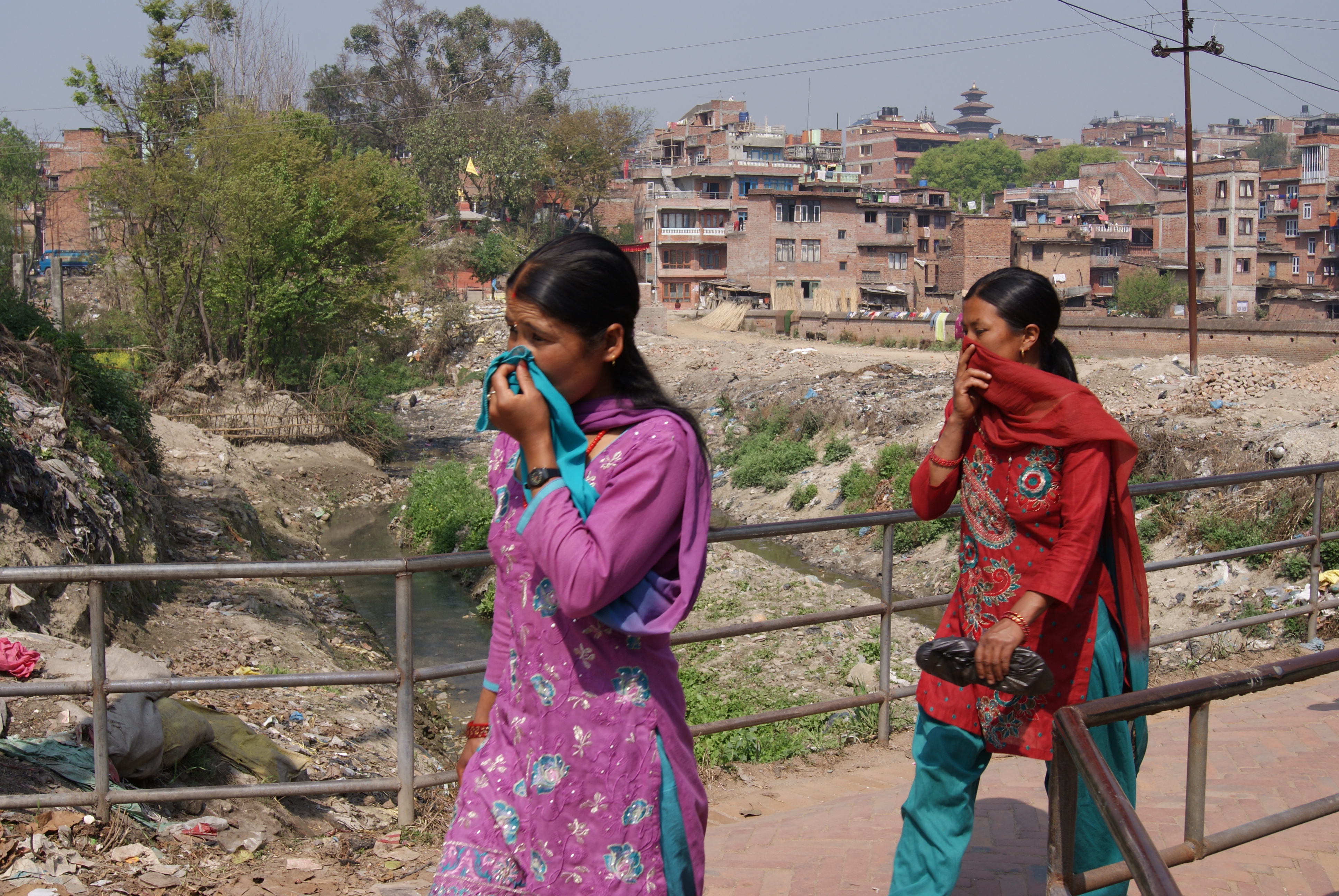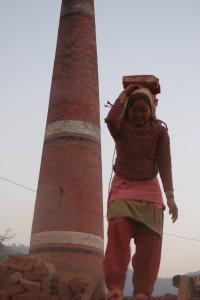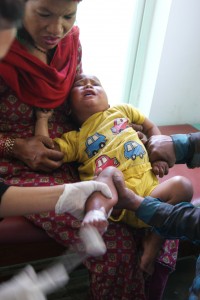
The baby was born two months premature. Her mother was carrying bricks when she went into labor. The doctors and nurses worked through the day and night to save the child, clustering around her purple body, coaxing her lungs to take in enough air. Her oxygen level swung wildly, down to a low of 16 percent, then recovering, then falling again. Finally, only 20 hours after being born, she died.
Bhaktapur is a famous tourist stop in Nepal’s Kathmandu Valley, a world heritage site beloved by the Instagram generation, and a vibrant muddle of street life, alleyways, and temples. But for the families and children who live and work near its kilns, it is a rife with hazards. A sprawling and dense network of industry testifies to the grim story of pollution and rapid churn taking place in the developing world. About 70 kilns, all similar to the one where the baby’s mother worked, have come to mark the region’s urban perimeter, their chimneys spewing thick, black smoke. Another 46 kilns line nearby nearby Kathmandu and Lalitpur, each employing 500 people or more.

Since the end of the Maoist insurgency in 2006, the Kathmandu Valley’s already rapid urbanization was dialed up. Its population has increased by 61 percent in the last decade. Migrant workers have fed the rapid shift. Rice paddies and fields have been replaced by development and industry. Rivers like the Hanumante, which flows through Baktapur, have become catchments for rubbish and sewage, turning gray and soupy. In Kathmandu, respiratory disorders occur at 12 times the national average.
The factories emit a toxic brew of particles and chemicals, including carcinogenic dioxins, particularly where rubber tires are used as fuel. Even at low levels these chemicals are linked to bronchitis, asthma, decreased lung function, cardiovascular disease, and low birth weight. A study by the World Bank showed that the factories were the valley’s leading source of small particulates, which can penetrate deep into the respiratory system and pass into the blood stream. Levels in the Kathmandu Valley have reached 15 times the World Health Organization’s recommended concentration.

Men and women labor 18 hours a day, in an atmosphere loaded with brick dust and smoky particulate. At Sri Navadurga Mata kiln, in the village of Sipadol, I saw people carry loads of up to 30 bricks on their backs, supporting cloths strung across their foreheads. Most laborers are Magars, an ethnic group from the foothills of the Himalayas in west central Nepal. Traditionally renowned as farmers and soldiers, they have been driven to the valley in search of the work that is increasingly centered in the metropolis. Families live in one room brick shacks just a few yards uphill from the chimneys, each dwelling about 50 square feet.
I spoke to a Newari man who said he woke up at 1 AM each day to begin mixing clay with water by hand and foot, then molding bricks with the help of his wife and older children, for 700 rupees, or about eight dollars, a day. His work did not finish until around 6:30 PM.“It’s not just that we get breathing problems,” he told me. “Every day we live with the pain, in our joints, in our muscles.”
Dr. Ram K. Chandyo, a researcher from the Institute of Medicine in Kathmandu, has been carrying out children’s health studies from Siddhi Memorial Hospital in Bhaktapur for 15 years. He told me that conditions at Sipadol are some of the better ones around. But even under the best conditions, the poverty, malnutrition, cramped conditions, and pollution lead to sickly children who stand out in the research data. It’s the children, he told me, who are suffering the most. “The conditions are extremely bad for their growth and development,” he said. “We are seeing serious effects to development and IQ.” Surveys by the Child Development Society found at least 30 children work at each factory.
Siddhi Memorial Hospital’s nursing supervisor, Sushila Khanal told me, “Sometimes their hair is white and you can see abdominal distension. They are extremely vulnerable to pneumonia.”

Families come to Siddhi Memorial from across the valley, seeking free children’s health care. When I visited, the hazards the kilns pose to children were made alarmingly plain on the bodies of patient after patient. Kul Bdr Pun, aged 2, came into the emergency unit screaming and writhing with pain. He had stepped into a pot of boiling water in the cramped one room home where his family lives, at the Sakaswoti brick factory. The nurses peeled away the dead flesh and bandaged the bright pink skin, while his mother held him still and clasped a hand over his mouth. His father Bal Bahadur Pun frowned when I asked him what could be done. “We are all living in a small room so there’s is big chance of the same accident.”
Later, five year old Dina came in after having nearly drowned. The third of three daughters, she was brought into the emergency unit with a low blood oxygen level and hypothermia. Her family live and work at a brick factory in nearby Tathali. The ponds and streams used by the factories have become a lethal trap for children like her. One nurse told me they received two or three similar cases a month, many fatal.
At the same time, a three year old was brought in with a burned and bleeding mouth. She had bitten into a damaged electricity cable in the factory grounds. There was no cease to the flow and variety of young patients and their preventable injuries.
The Bhaktapur District Administration Office is working at declaring Bhaktapur a child labour-free zone. Government schools run seasonal classes for the children. But as long as the going rate is a meager 600 or 700 rupees for 1,000 bricks a day, the temptation for families to have all hands on deck is difficult to resist.
It is impossible to say for sure whether the premature baby’s death was the result of the current living conditions. What is certain is that these conditions are seriously compromising the lives of all the children living in proximity to the kilns. Eighty-five percent of outpatients at Siddhi Memorial Hospital have respiratory problems, and that is to say nothing of the other injuries and conditions they suffer. “The damage that is being done now,” says Dr. Ram, “will stay with the children for their entire lives.”